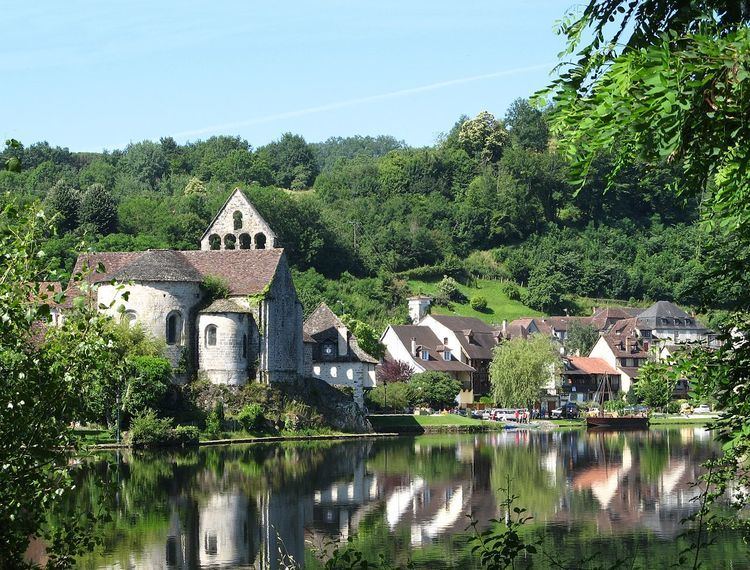Area 8.65 km² | Intercommunality Sud Corrézien Local time Wednesday 6:02 AM | |
 | ||
Weather 3°C, Wind SE at 2 km/h, 98% Humidity | ||
Beaulieu-sur-Dordogne (Occitan: Bel Luec) is a commune in the Corrèze department in the Nouvelle-Aquitaine region of central France. Beaulieu is a medieval city, originally dominated by its great abbey of St Pierre, of which only the abbey church remains.
Contents
Map of 19120 Beaulieu-sur-Dordogne, France
Abbey
Like those at nearby Uzerche and Limoges, the abbey of St Peter at Beaulieu was a Benedictine foundation of the 9th century, and flourished largely because of its proximity to the Way of St. James. It was established around 855 by Rudolphe of Turenne, Archbishop of Bourges. The first monks came from the abbey of Solignac, near Limoges.
As its wealth grew, the independence of the abbey was threatened by neighbouring feudal lords and it was defended against their depredations by the bishops of Limoges. In the 11th century it was absorbed by Cluny Abbey. Around 1095, the construction of the great abbey church was begun and it continued for nearly half a century. In the fourteenth century, a separate western steeple was erected: this also acted as the town's belfry.
The abbey declined during the Hundred Years' War, which devastated the region. The religious wars completed the process. The town and abbey fell to the Hugenots in October 1569, and it was not until 1663 that the abbey began to function again. It was dissolved with the French Revolution and destroyed, apart from the church.
Abbey church
The church has a nave of four spans, a transept and a large choir, surrounded by an ambulatory. The choir, the southern arm of the transept and much of the nave date back to the original Romanesque phase of the building. The belfry and the central tower are of later, Gothic construction. The total length of building is 71 metres, and the width at the transept is 38 metres. The nave rises to 17 metres, while the central tower exceeds it by 6 metres.
The most notable feature of the church is the elaborately sculpted south portal, particularly the tympanum. Instead of the usual Last Judgement, this depicts the Second Coming, the triumphant return of Christ, and the General Resurrection. A 2.1 metre Christ, his arms spread in the form of a cross, is flanked by the 12 Apostles, while angels above him carry the crown and nails. Meanwhile, other angels sound the trumpet to summon up the dead.
Another notable feature is a fine baroque retable in gilded wood, dating from 1678, shortly after the refounding of the abbey. It depicts the Assumption of the Virgin. The treasury contains a number of important high medieval items, including a Virgin and Child and two arm reliquaries, all made of wood and covered in silver or gold leaf.
